Art History
Leonardo’s ‘Lady With an Ermine’ Is a Riddle of Love and Power—Here Are 3 of Its Secrets
We took a closer look at this enigmatic portrait of Cecilia Gallerani, the mistress of the Duke of Milan.
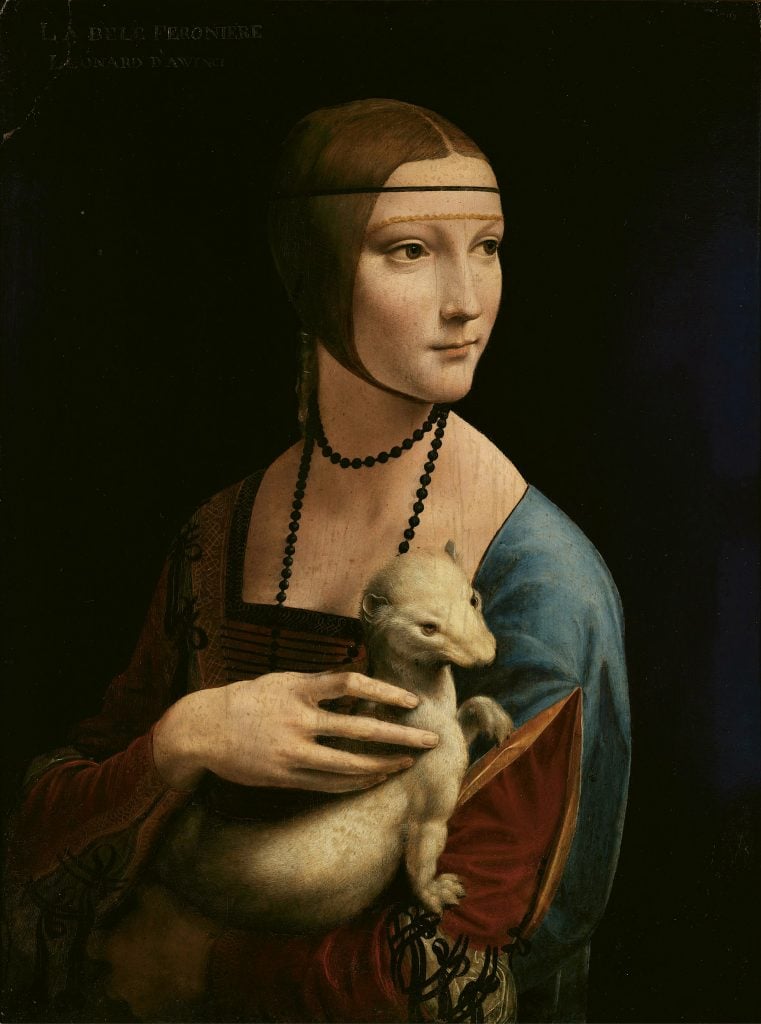
We took a closer look at this enigmatic portrait of Cecilia Gallerani, the mistress of the Duke of Milan.

Karen Chernick

By the time Italian Renaissance art patron Isabella d’Este asked Cecilia Gallerani if she might borrow Leonardo da Vinci’s Lady With an Ermine, a portrait of Gallerani painted nearly a decade earlier, Gallerani was convinced of two things. One, that Leonardo was an unrivaled master, and two, that she no longer resembled that painted maiden with a ferronière on her forehead, shown nestling an ermine.
“I would send it with greater pleasure if it were more like me. But your Highness must not think that this is due to any defect in the master himself, for in truth I believe there is no painter equal to him,” Gallerani wrote in a letter to d’Este in 1498. “The portrait was painted when I was very young. I have since then changed altogether, so much so that if you saw the picture and me together no one would imagine it could be meant for me.”
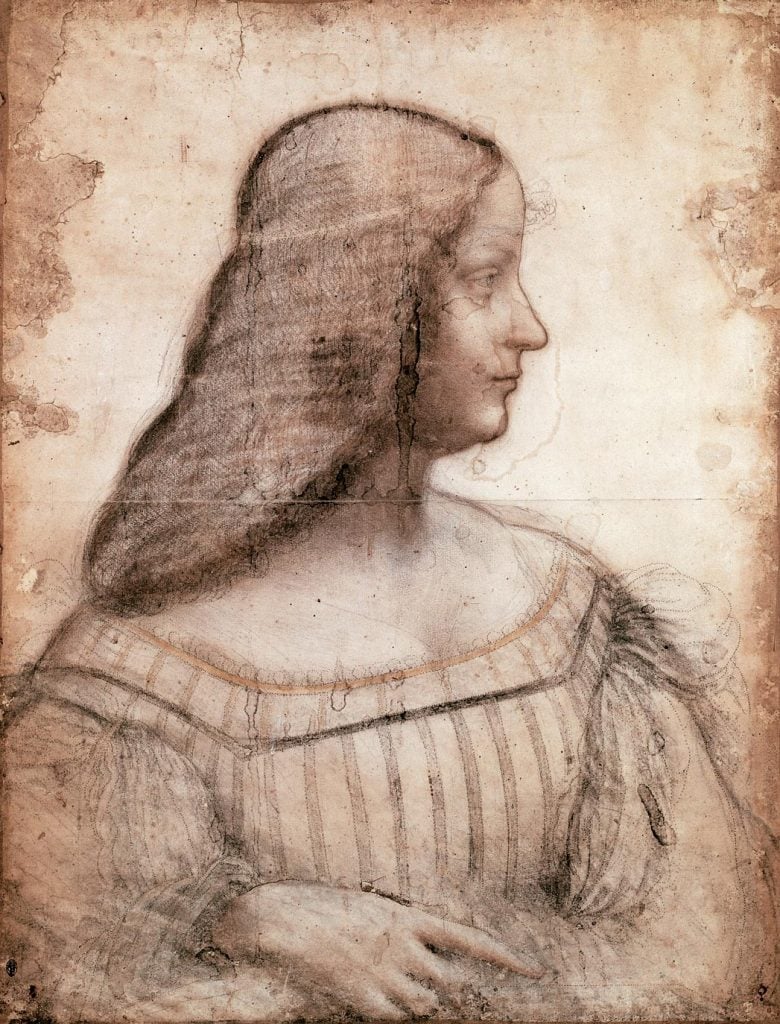
Leonardo da Vinci, Portrait of Isabella d’Este (1499–1500). Collection of the Louvre Museum.
Gallerani may have just been fishing for compliments since the portrait wasn’t painted all that long before. Leonardo made the portrait sometime between 1489 and 1491 after he had advanced from a court musician and inventor to acting as an official court painter for the Duke of Milan, Ludovico Sforza (commissioner of Leonardo’s famed Last Supper). Gallerani was around 17 years old in the portrait and had herself shifted from being a lady-in-waiting to the Duke’s mistress (possibly already bearing his child).
In this oil-painted portrait on walnut board—one of only four surviving painted portraits of women by the artist (joining the ranks of the Mona Lisa)—Leonardo artfully tackles the problem of how to create a reputable double portrait of an illegitimate couple.
While the couple eventually parted ways, it was not for lack of affection. (Rumor has it that Sforza’s wife, Beatrice, put the final kibosh on things after he tactlessly gifted both women the same dress, which Gallerani wore around the castello where they all resided.) After their parting, Gallerani moved out to a palazzo the Duke gifted their son, and married a Count. But she kept Leonardo’s portrait of her until her death in 1536, hanging it in her chambers.
Here are three things you may not know about Leonardo’s famed Lady With an Ermine.
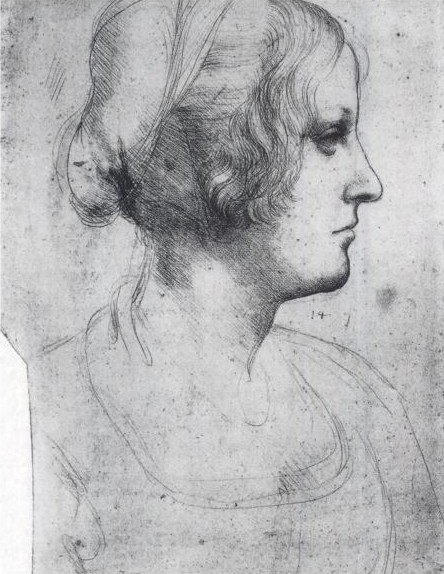
A drawing of Cecilia Gallerani by Leonardo da Vinci (15th century).
A live ermine may not seem like a natural accessory for a young lady, but it wasn’t quite as odd in Renaissance Italy. Gallerani’s furry companion (Leonardo added the ermine well into the painting of the portrait) has been interpreted in several ways.
The ermine could be a pun referring to the sitter’s name, since ‘gale’ (the beginning of her family name, Gallerani) meant ermine or weasel in Greek. Given who commissioned the portrait, though, it’s also feasible that it refers to the Duke since Sforza was often called the “White Ermine” after he’d been granted the honorary title of Order of the Ermine by the King of Naples in 1488. Otherwise, it could refer to the product of Gallerani and the Duke’s relationship—her pregnancy with their son, Cesare. In Italian Renaissance culture, weasels were thought to protect pregnant women, and their appearance in Renaissance paintings may have been used to allude to or predict pregnancy.
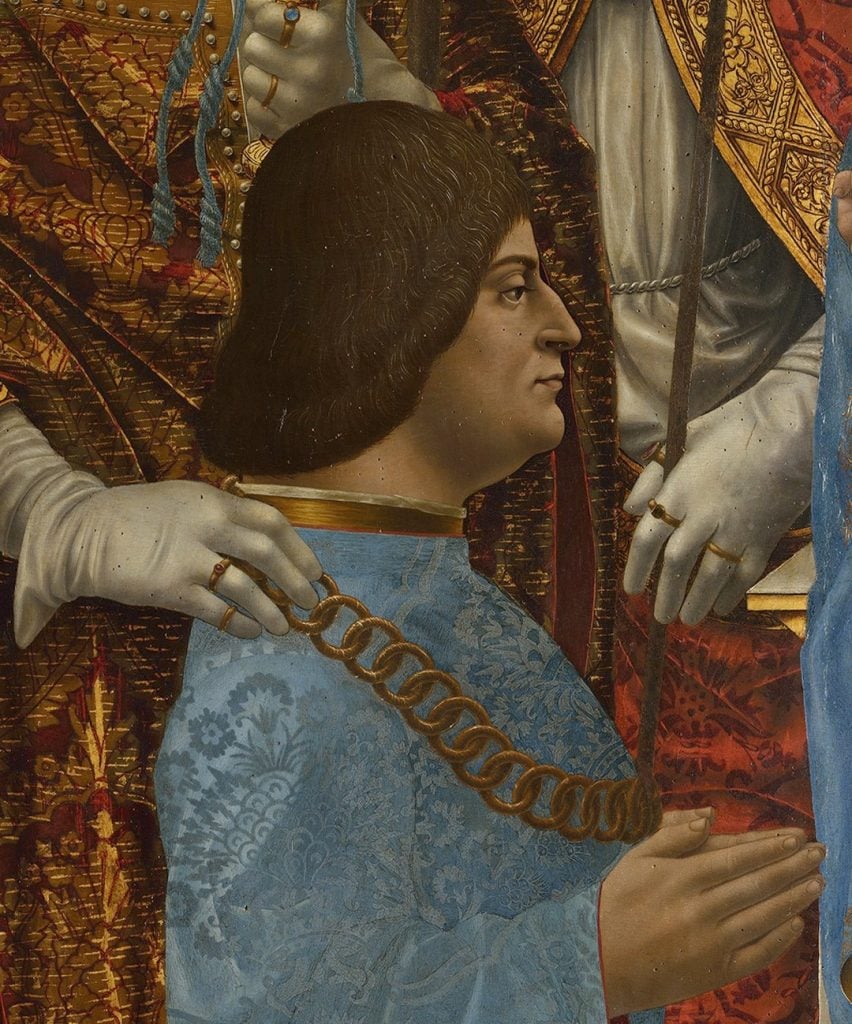
Ludovico Sforza’s portrait in the Pala Sforzesca (1494–1495). Collection of the Pinacoteca di Brera, Milan.
A decade ago, new technologies revealed that Leonardo hadn’t always planned to include the ermine, suggesting that it was added to convey some intentional message. French scientist Pascal Cotte studied the painting for three years using “layer amplification method” (LAM) technology, revealing that Leonardo added a small grey ermine in a revision to his first, ermine-free, composition which ultimately transformed into the large white one in the final composition. This progression may indicate the couple’s desire to affirm their relationship more publicly.

Leonardo da Vinci, Lady with an Ermine (1489–1491). Collection of the Czartoryski Museum, Kraków, Poland.
The precise year that Leonardo worked and reworked this painting isn’t conclusively known but we do know the date it must have been completed by—thanks to a sonnet. Italian court poet Bernardo Bellincioni wrote a few verses about the portrait in 1492 and published them in 1493, meaning he must have seen the finished version beforehand.
“The honor is yours, though in his painting
He’s made her seem to listen, but not to speak.
Think how very alive and beautiful it will be —
To your greater glory — for all time,” reads the sonnet’s second verse, speaking directly to Nature.
“Therefore you may now thank Ludovico,
And the genius and skill of Leonardo,
Who want her to belong to posterity.
He who sees her thus, even though too late
To see her alive, will say: this is enough for us
Now to understand nature and art.”
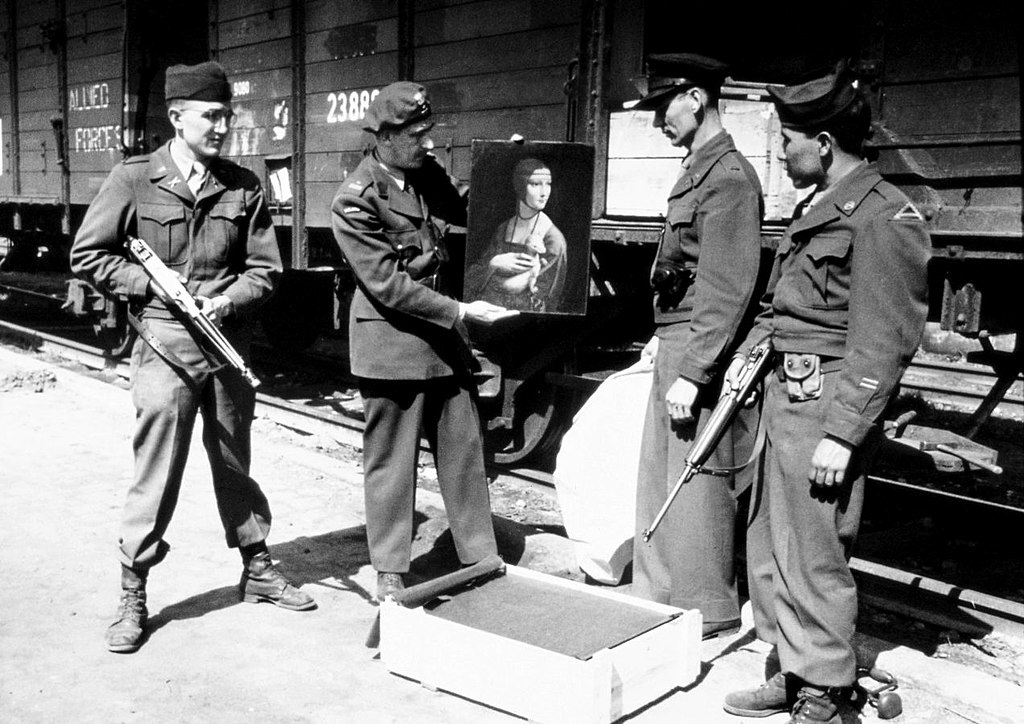
The Monuments Men with Leonardo’s Lady With an Ermine. Courtesy of Wikimedia Commons.
How Lady with an Ermine changed hands upon leaving Gallerani’s chambers after her death is unknown, but Polish prince Adam Jerzy Czartoryski bought it around 1800 and gifted it to his mother Izabela Czartoryska, who was working on creating the first museum in Poland (which later became the National Museum in Kraków). (The circumstances of the sale are vague, without provenance to go on.) When Izabela wrote about the painting for her museum, in 1809, she wrongfully identified Gallerani as the mistress of French King Francis I. “She was called La Belle Ferronnière, and was believed to be the wife of an ironmonger,” wrote the princess. “Others state that her husband was the patron.” This erroneous identification of the sitter wasn’t rectified until the 20th century.
The portrait stayed in Poland until the 1830s when Prince Czartoryski went into exile after leading an uprising against Russia. He took it with him to the Hôtel Lambert in Paris, and it remained there until the family returned to Poland in the 1870s. Shortly after, in 1878, the painting was exhibited to the public with the opening of the Czartoryski collection.
The royal family wasn’t able to protect the Lady with an Ermine a second time, though, and it was taken by Nazi forces (along with other works from the Czartoryski collection) when Germany occupied Poland during World War II. The portrait was briefly exhibited at the Kaiser-Friedrich Museum in Berlin and then taken by Hans Frank, Nazi Governor-General of occupied Poland and Adolph Hitler’s personal lawyer. Frank hung it in his office in the Wawel Castle of Kraków for a year.
When World War II ended, the painting was returned to the National Museum (which, by that time, had absorbed the Czartoryski Museum). When the Berlin Wall fell in 1991, the Czartoryski family regained rights to its art and some of its property and ultimately decided to sell the entire priceless collection (including Lady With an Ermine) to the Polish government for a sum of €100 million—significantly below its market value—as a gift to the people of Poland.